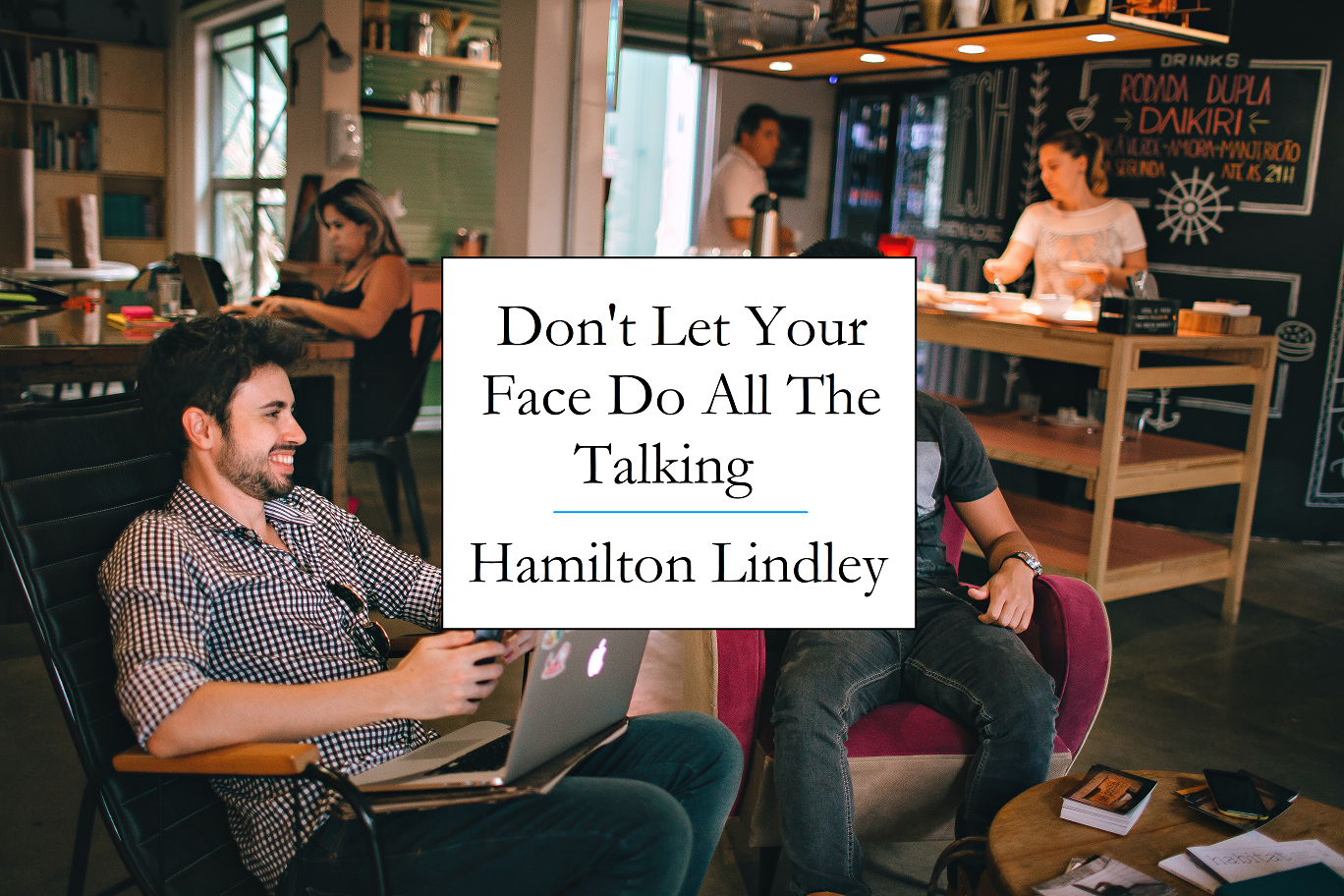After the last few years of meetings looking at myself on video calls, I decided to hide my image from the screen in a video meeting this week. I asked some questions during that meeting. After the meeting, I read a message from someone on my team that read “Hamilton is pissed!” during my questioning. My face said what my mouth didn’t.
Since coming back to the office, I’ve had people ask whether I’m mad when I’m sitting alone in my office. I haven’t been angry at all. But my face is sending an unintended message while staring at my screens. While I’m typing, my eyebrows apparently have the intensity of 1,000 suns. When I can see myself on video, I make a conscious effort to look friendly. But I’m not making that same effort when I can’t see myself on the video feed.
People make conclusions about you based on your facial expressions. Your face sends a signal about your mood. This message may be one that you don’t intend. You must regulate your facial expressions at work if you want to be a leader. Others may interpret your facial expression as judgmental, unapproachable, or as if you are permanently enraged and plotting revenge. That’s not a person most people want to follow. Have you ever had a boss with a furrowed brow, clenched jaw, and grimacing lips? I have, and it placed the whole team on edge.
What message does your face send to those around you?
When I’ve talked with other workers about their expressions, I’ve heard all the reasons.
- “I’m just resting my face.” (If you’re alone behind closed doors, that’s alright.)
- “I’m not a happy person.” (It has nothing to do with pep. It has everything to do with recognizing your impact on others.)
- “On the inside, I’m grinning.” (Then do the same thing on the exterior.)
- “It’s just how I’m wired.” (No. You learned it from your parents, teachers, or boss.)
- “I’m not going to be able to pull it off.” (For most individuals, their resting face is pretending. It isn’t who they are, it hinders their capacity to lead, and they can’t understand why working so hard isn’t enough.)
Make and sustain a friendly, confident expression on your face as often as possible. The more you practice, the better you’ll be at maintaining your game face. It may be uncomfortable at first to hold it, but persevere and it will become your default facial expression.
Make your face match your (positive) attitude.
A cheerful attitude will help you influence people positively and delegate more successfully. But people will not notice your good mood if they don’t see it on your face.
According to studies, your influence is impacted by the way you bend your mouth corners:
- According to a study from the University of Kansas, cracking a smile even when you don’t feel like it decreases the body’s stress reaction.
- According to a study conducted by New York University, persons who appear joyful are perceived to be more trustworthy.
- Emotions impact your face, but facial expressions influence emotions, according to a University of Maryland study.
If you can’t grin more, at least scowl less, because your expression quickly turns into a permanent look of intense discontent. No one wants to follow someone who is innately angry.
“Once people get to know me, they genuinely like me,” one employee told me, “but they never get to know me because I scare them away with the way I stare at them.”
Even if you haven’t been told you have a “resting bitch face” you may need to study your facial expressions. You may not appear furious, but you may appear irritated, indifferent, or depressed. In any case, you’re not exuding confidence. Just look at the faces of people who are staring at their smartphones.
In interviews with more than 1,000 C-level executives, researchers found that being “kindly confident” is one of the attributes necessary to lead. To be kindly confident, be comfortable in your skin, self-assured, and realize that other people’s ideas, traits, and knowledge count more than your own. Leaders convey “kind confidence” by grinning with elevated face cheeks and lips that are neither too open nor too closed.
How to Create a Friendly Default Facial Expression
Pull your face muscles up a half-inch toward your eyes. This gently raises the corners of your mouth. When you speak the words “cheese-whiz” or “eggplant,” open your lips a quarter-inch apart.
The two-step combination of raising the corners of your mouth and slightly separating your lips gives you an accessible, inquisitive, attentive, nonjudgmental, and self-assured expression.
Stop right now and take a picture with your face, just as you did when you first started reading this post. Then, after adjusting your facial expression, snap a second selfie. Do you see the difference?
This is the expression you must maintain regardless of whether you are angry, sad, happy, terrified, or annoyed. It’s the “game face” of a leader. You must retrain your facial muscles to produce an expression that is awake, attentive, and active rather than a negative, intense stare.
It Is Both Possible And Necessary To Control Facial Expressions At Work
Controlled facial expressions help you lead more effectively. Whether you realize it or not, your face tells a story. The most crucial aspect of body language that people read is your facial expression.
You may be mindful of the tale you’re presenting and take responsibility for what your face is conveying if you’re a thinking person. Your “kindly confident” facial expression, no matter how you’re feeling on the inside, may help you lead calmly and develop ideas.

